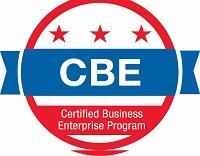The Office of Strategic Capital plans to issue the first loan awards by late spring or early summer, but the timeline will depend on the quality of applications the office receives, OSC Director Jason Rathje said Tuesday.
The OSC recently released its first notice of funds availability — nearly $1 billion of credit is now available to companies to procure, refurbish, or install manufacturing equipment that supports the production of technologies deemed critical to national security.
Eligible applicants will follow a two-part application process. The first part of the process closes on Feb. 3rd., and selected applicants will be able to submit the second part of their application for further evaluation.
While the goal is to issue the first loan awards by the late spring-summer timeframe, the process will depend on whether the applications meet eligibility standards and align with the Office of Management and Budget’s oversight processes since the OMB oversees the program.
“It will really depend on the quality of the applications we get through. And the other piece of this is making sure that we are underwriting in a way that aligns to the new processes we’ve been building with OMB,” said Rathje during the Association of the United States Army conference.
“OMB sits as our regulator, and this is true across all federal lending programs. We have established eligibility criteria, which is also in the application. A lot of this is working through the details on making sure that that applies well to the program.”
These direct loans, ranging from $10 million to $150 million, will finance hard and soft costs related to manufacturing equipment that supports technologies across 31 covered technology categories that are considered vital to national security.
Congress helped the Defense Department define the technologies that can receive OSC funding in the 2024 defense policy bill — the technology categories laid out in last year’s legislation are complementary to the 14 critical areas identified by the DoD.
“We are not financing the facility at this point, although we are targeting that for a future investment program. You have to have a place to put the equipment,” said Rathje.
“Don’t come to us if you’re building a pointy thing that goes boom, because we can’t invest in it. But we can invest in the things that go into the pointy thing that goes boom. We can invest in semiconductors, materials, chemical precursors, and next-generation biotechnologies — areas that have commercial growth opportunities that can be used to underwrite the loan, which is where we have to focus.”
The lending program operates much like a traditional bank but it provides loans at the terms and rates aligned with the purpose of the loan and the corresponding Treasury note rates. Those rates are typically lower than commercial loan rates, ensuring that the financing is affordable and mission-focused rather than driven by profit. The OSC, however, doesn’t replace commercial banks but rather works complimentary with them.
“If you’re going to go buy a new fermentation tank for your biotech company, and we think the useful life of that asset is 15 years — we can do a 15-year loan because we’re lending against the depreciation of that actual asset, as opposed to a commercial bank, which is going to have certain corporate limits that they are going to offer a loan against,” said Rathje.
“This is true across all federal lending programs. This is just why we think this is so important for these industries that are vital to national security have access to the same kind of finance. But this won’t replace your private bank.”
The Defense Department stood up the OSC less than two years ago, but it has grown significantly since then, evolving from a small team of three people to more than 60 employees today. The office is expected to grow to more than 100 employees by next year.
“We’re hiring underwriters, originators, portfolio managers, credit risk modelers, the entire spectrum of institutional finance is now coming to the department, and I think it’s making the DoD a really exciting partner moving forward, because now we’re focused not only income statements but also on the balance sheet,” said Rathje.
Copyright © 2024 Federal News Network. All rights reserved. This website is not intended for users located within the European Economic Area.


